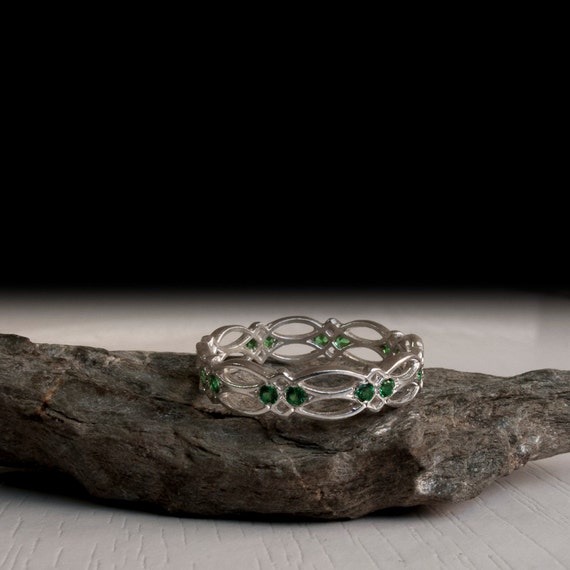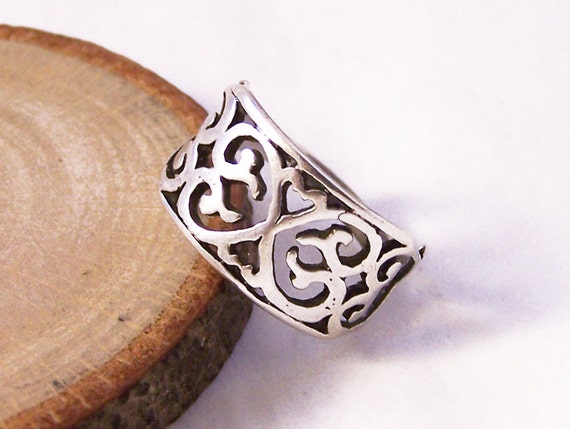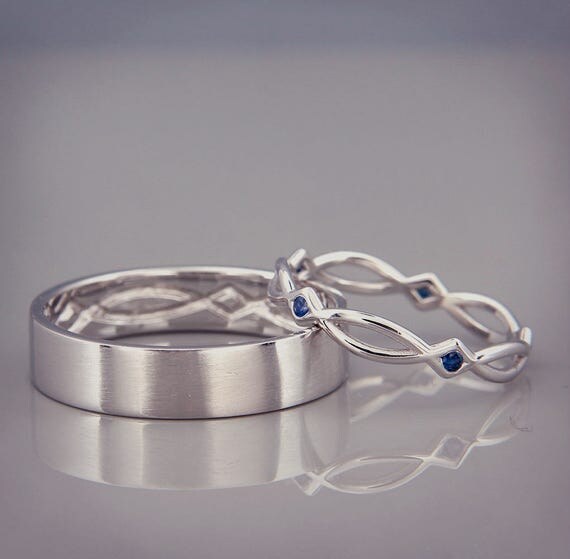Celtic History
To truly understand the rich history of Celtic jewellery, you must understand the history of the Celtic people. Celts rule lands throughout Europe for hundreds of years. Today’s main population is centred in parts of Ireland and the beautiful highlands of Scotland. The Celts were proud warriors, merchants and rulers. Nomadic in nature, which allowed them to learn much from other cultures, including the Druids. Celtic lore was passed down through legends and word of mouth across the clans and timeless stories of battle, romance and mischief are the chief underpinnings of Celtic jewellery symbols such as the Claddagh and the Trinity Knot.
Celtic Jewellery










Celtic jewellery dates back to around 2000 B.C. Celtic rings, shields and other stunning metalwork have been discovered all over Europe and are celebrated examples of this rich culture. Tribute to nature of one of the most common themes in Celtic culture and Celtic clans would emblazon symbols onto their swords, clothing and even on their bodies that would reflect a kinship with the land, people and God. These symbols were also incorporated into various types of jewellery as adopted by very talented craftsmen across Europe.
The art of Celtic jewellery craftsmanship is a time-honoured one that has been passed down from generation to generation. This mystical craft incorporates intricate knots and geometric symbols with the precious metals of gold, silver and bronze. Some of the earliest pieces of artwork can be found today at the National Museum of Ireland. Irish monks have honed the tradition further by creating the revered Celtic Cross that is prominently featured in so many ancient illuminated manuscripts such as the Books of Kells and Durrow.
The unique style of the Celtic jewellery attracted many traders and who began to sell the jewellery to foreign buyers. Celtic jewellery continues to hold a special meaning for many people all over the world. There is a unique piece of jewellery for everyone!
The Different Types of Celtic Symbols - Rings
Various popular Celtic designs are incorporated into beautiful rings made out of gold, bronze or silver. Some the designs consist of the following Celtic symbols; Trinity Knot, Celtic Spiral Knot, Celtic Love Knot, Sailor’s Knot, Dara Knot, Shield Knot or the Celtic Cross. Each of these Celtic symbols has a unique meaning:
• Trinity Knot: The Celtic Trinity Knot, which is also known as the Triquetra and is one of the best-known symbols in Celtic history. It has been used by the Celtic Christian Church in earlier times, but other cultures used the symbol too and each attached its own meaning. One of the great things about the Trinity Knot is its versatility; it has been used as a symbol in a variety of religions and even today, it has new significance. According to the Celts, the most important things in the World came in threes: three domains, three elements, three stages of life etc. It is also thought that the Trinity knot signified the lunar and solar phases. In today’s times, you can find the Trinity Knot on jewellery, clothing and even CD covers!
• Celtic Spiral Knot: Derived from the Greek word “Triskeles” meaning three legs, the spiral knot is a complex ancient Celtic symbol, which was used consistently in Celtic art for 3 millennia. The triple spiral is often interpreted as standing for the three realms – land, sea and sky.
• Celtic Love Knot: The Celtic Love knots are complete loops that have no start or finish. It’s believed that they represent eternal loyalty, faith, friendship and love. Interestingly only one thread is used in one design which symbolises how life and eternity are interconnected.
• Sailor’s Knot: The Celtic Sailor’s knot is made from tow inter-twined ropes and dates back to ancient times when the Celtic sailors who spent long months at sea would remember their loved ones. The knot consists of two entwined knots and so, symbolizes harmony, friendship, affection and deep love.
• Dara Knot: The word ‘Dara’ can be traced back to the Irish word, Doir which means ‘oak tree’. The Dara Knot is associated with the root system of grand oak trees. The oak tree symbolizes destiny, power, strength, wisdom, leadership and endurance.
• Shield Knot: The Celtic Shield knot is an ancient and while known symbol across the world. The Shield knot has been used for thousands of years by a variety of cultures for protection and warding. Although the common design is most often associated with the Celts and ancient Norse, the most basic form goes back much older. There are two different versions; the Fourfold and the Four-corner emblem. The Fourfold version is older and is associated with protective spells invoking the Gods of the four corners of the earth. The Four-corners emblem is the newer version and used in the Kabbalah as a symbol of prayers to invoke the four Archangels and in still used in magic today. This knot is sometimes referred to as the ‘Earth Square’. The Celtic version of the knot is used for the same purposes of protection but are related to the fourfold solar cross in origin.
• The Celtic Cross: The Celtic cross is probably one of the most popular ring symbols and is a form of Christian cross featuring a nimbus or ring that emerged in Ireland and Britain in the early middle ages and it has become a staple of Insular art. Essentially the symbol is a Latin cross with a nimbus surrounding the intersection of the arms and stem.
Buying Your Statement Celtic Ring
Celtic rings and various other jewellery pieces are highly popular and desired, despite being age-old designs. The patterns found on rings are magnetic and highly alluring and the majestic beauty that the Celtic era signifies flows through these rings and it comes as no support that many jewellery stores are proud stockists of Celtic jewellery.
When buying your ring look for a jeweller that uses excellent quality silver, gold and platinum and remember that your ring can even be adorned with corals, semi-precious stones or even precious stones like emerald and rubies when creating your unique piece. Keeping the advice listed below will go a long way in ensuring that one is able to pick the right kind of Celtic jewellery.
Celtic rings can be for everyday wear! Not all of us go to jewellery stores looking to buy grand and expensive pieces. Most of us are hoping to buy jewellery that we can wear casually too. Celtic designs can easily be incorporated into your daily wear, despite their grand designs. Try and pick Celtic patterns that look complete even though they have been incorporated into smaller pieces.
If you are looking for a special occasion, then larger Celtic rings are sure to be awe-inspiring. Pick out a slightly larger piece than a smaller one. These can be in either gold or silver, according to your budget and preference.
You can even get Celtic wedding rings! Celtic bridal jewellery is very popular since it lends a majestic aura to the bride. You can pick designs that have semi-precious and chunky stones in them in order to add some colour to the jewellery piece. Working with moonstones and even corals will work quite well since these stones blend rather nicely with the Celtic patterns. Keep in mind that these designs usually look better in an antique finish as opposed to a glossy one.
The bottom line is that when choosing a Celtic ring there are no restrictions. Be it traditional wear or everyday casual attires, these rings mix and match with everything. The very fact that Celtic jewellery has been around for all these centuries goes to prove that these patterns are going to live as long as your ring does!
Caring guide for your Celtic ring
Over time, jewellery rings can become a very precious family heirloom. However, taking care of your ring to keep it in prime condition require effort. The gemstones of your ring can lose their clarity from things such as daily wearing, pollution, and fine dust. The surfaces of gold, silver, and platinum rings can become dulled. This is why it's essential that your Celtic jewellery ring receives the proper care and attention it deserves.
We recommend that your ring is professionally cleaned at least once a year in order to maintain its clarity and beauty. For the 'in between' care we suggest the following:
Platinum, Gold & Silver Celtic rings: A non-abrasive cleaner will help to maintain your gold and platinum jewellery between annual professional cleanings. Salt air and products containing sulphur, even some papers and rubber bands, can cause rapid tarnishing in sterling silver jewellery. Silver will stay at its best through regular use of a non-abrasive silver polish.How you store your ring is also a very important part of taking care of it. We recommend that it always be placed in a lined box or pouch, such as the original case, when not being worn.
Cleaning your ring: Your ring is prone to getting dusty, soiled and smudged, the natural oils from your skin, lotions, powders and soaps can all create a thin film on the surface of the metal and in between the groves of the Celtic design. There are several ways to clean your ring:
• Detergent Wash: You already have what you need to clean your ring: an old toothbrush and some dishwashing detergent. Dish detergent is designed to cut through grease and grime and to rinse off easily, which are exactly the properties needed to clean jewellery. This can be used safely for cleaning both gold and silver jewellery, etc. It will not harm gems or metals.
• Cold Bath Water: Using 4 parts of cold water and 1 part of a very mild dishwashing detergent, make a solution to soak your ring in for several minutes.
• Dip Method: Find the brand name liquid jewellery cleaner that's best for the kind of ring you have according to the stone and metal type. Follow the instructions on the label of the cleaner carefully.
from
https://www.mypearls.co.uk/blogs/news/10-stunning-celtic-rings

No comments:
Post a Comment